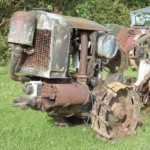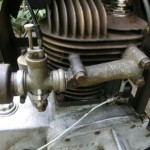Home › Forums › The Main Forum Area › General talk and discussion › Piston Ring Gaps
- This topic has 4 replies, 5 voices, and was last updated 8 years, 4 months ago by
 trusty220.
trusty220.
-
AuthorPosts
-
December 19, 2015 at 5:36 pm #15544
 vhgmcbuddyMember
vhgmcbuddyMemberFound an interesting article on the internet regarding piston ring gaps. Yes, I know it doesn’t sound like a gripping read, but if like me you slavishly follow workshop manuals advice on staggering ring gaps and achieving the specified ring gap to a thousandth of an inch, it might raise a few eyebrows!!
Website address is http://www.diagnosticengineers.org/journal_%20articles/Ring%20Gaps%20vs%20Knowledge%20Gaps.php
December 20, 2015 at 8:25 am #15548 charlieKeymaster
charlieKeymasterVery interesting, as are some of the other articles eg ‘how long is a clutch’.
December 20, 2015 at 9:37 am #15550 wristpinParticipant
wristpinParticipantA fascinating article. I first heard about “rotating rings” many years ago while attending a service course given by the lately retired ( and much missed) Nick Rosam, Service Manager of Briggs and Stratton UK, but the information on ring gap sizes is new and interesting reading.
Interesting that the writer should mention Caterpillar; having worked for and learnt from Cat straight out of college and been indoctrinated in the Cat way (right?) of doing things, 30+ years of working with garden machinery have shown that there is also the “pragmatic” way as well !
Best practice and factory manual tolerances have their place but I know of at least one mower engine that’s running quite happily several years after having been built up from a collection of mismatched parts from the scrap bin.December 20, 2015 at 11:15 am #15551 ransomes256Participant
ransomes256ParticipantThis is a little misleading taking workshop manual build info and comparing it to strip and diagnosis findings.
The manual requirement to set gaps spaced radially around the piston is based on new build and assumes initial bedding in of the ring has not yet occurred. If all the gaps on one piston are in line it can give an easier initial route for ignition gases to pass by and burn the piston edge. If the rings are a little dry and tight on initial start and fail to rotate straight away this can lead to an early failure especially on higher compression and performance engines.
It is true that as the rings are free to rotate at will they will inevitably line up at some point but in the case of a multi cylinder engine unlikely to be on multiple bores at the same time.
Before retirement I was supervisor on engine testing and inspection for a major motor manufacturer and when we identified one piston with gaps in line we would only note it but when you find all 6 or 8 pistons with rings in line after 1 hours running something is wrong.
NeilDecember 21, 2015 at 8:28 am #15556 trusty220Keymaster
trusty220KeymasterI have seen the original Briggs and Stratton training video as well, years ago when Ian Carr (the mad professor) used to run the training.
It is important for initial start up after rebuild to have the gaps staggered, but the rings will rotate in use and sooner or later the gaps will line up. They don’t stay lined up for long and carry on rotating, and so any loss of pressure will only be momentary and if the end gaps aren’t excessive then the pressure loss will be hardly noticeable anyway.
An interesting topic all the same!
-
AuthorPosts
- You must be logged in to reply to this topic.
